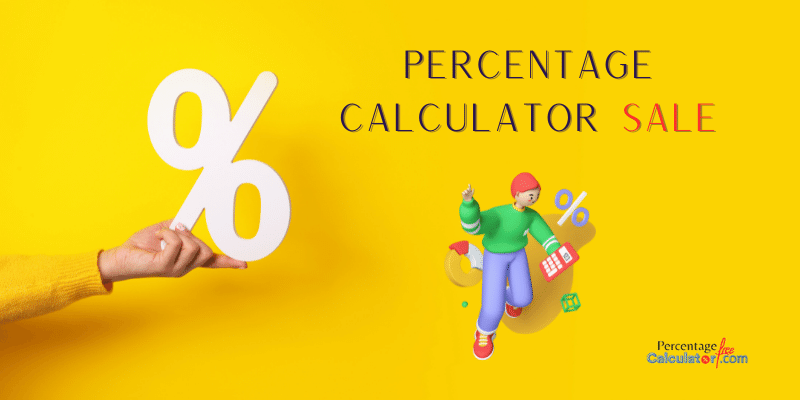
Are you looking to get the most out of your sale shopping experience? Calculating the percentage sale can be a great way to ensure you get the best deal possible. In this blog post, we will provide step-by-step instructions on calculating the percentage sale and getting the most value for your money.
What is the percentage sale?
The percentage sale is the amount by which the price of a product is reduced during a sale. It is usually expressed as a percentage of the original price. For example, if a product that originally cost $100 is now being sold for $80, the percentage sale would be 20%.
How to calculate the percentage sale
To calculate the percentage sale, you need to know the original price of the product and the sale price. Here’s how you can do it:
Step 1: Subtract the sale price from the original price.
Step 2: Divide the result by the original price.
Step 3: Multiply the answer by 100 to get the percentage.
For example, if a product initially cost $100 and is now being sold for $80, the percentage sale would be:
Step 1: $100 – $80 = $20
Step 2: $20 ÷ $100 = 0.2
Step 3: 0.2 x 100 = 20%
Benefits of using a percentage sale calculator
Using it can make the process of calculating the percentage sale much easier and faster. Here are some benefits of using a percentage sale calculator:
Accuracy: A percentage sale calculator eliminates the chances of making calculation errors.
Time-saving: A calculator can perform complex calculations in seconds, saving time and effort.
Convenience: A percentage sale calculator is available online and can be used anywhere.
How to use a percentage sale calculator
There are several percentage sale calculators available online that you can use to calculate the percentage sale. Here are the steps to use the calculator:
Step 1: Go to a percentage sale calculator website.
Step 2: Enter the product’s original price and the sale price.
Step 3: Click on the calculate button.
Step 4: The calculator will display the percentage sale.
Examples of percentage sale calculators
Here are some examples of percentage sale calculators that you can use:
Percentage Calculator Sale
Sale Price Percentage Calculator
Percentage Off Sale Calculator
How to calculate the percentage off sale price
In addition to calculating the percentage sale, you can also calculate the percentage off the sale price. Here’s how you can do it:
Step 1: Calculate the percentage sale using the method described above.
Step 2: Subtract the percentage sale from 100.
Step 3: The result will be the percentage off the sale price.
For example, if a product originally cost $100 and is now being sold for $80 (20% off), the percentage off the sale price would be:
Step 1: 20%
Step 2: 100% – 20% = 80%
How to calculate sales tax
Sales tax is a tax levied on the sale of goods and services. The sales tax rate varies by state and city. Here’s how you can calculate sales tax:
Step 1: Multiply the product cost by the sales tax rate.
Step 2: Add the result to the cost of the product.
Step 3: Including sales tax, the final amount is the cost of the product.
For example, if the sales tax rate is 6%, and a product costs $100, the sales tax would be:
Step 1: $100 x 0.06 = $6
Step 2: $100 + $6 = $106
The total cost of the product, including sales tax, would be $106.
Similarly, if the sales tax rate is 7%, the calculation would be:
Step 1: $100 x 0.07 = $7
Step 2: $100 + $7 = $107
And if the sales tax rate is 8%, the calculation would be:
Step 1: $100 x 0.08 = $8
Step 2: $100 + $8 = $108
Conclusion
Calculating the percentage sale can help you get the best deal possible while shopping. Whether you use a calculator or calculate manually, it’s essential to know the original price and the sale price to determine the percentage sale. Additionally, calculating the sales tax can help you determine the total cost of the product, including tax. With these calculations in mind, you can shop smarter and save money.

